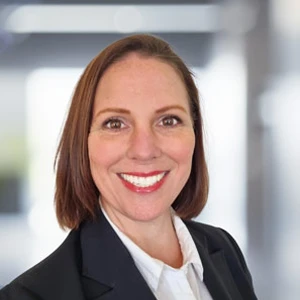The Emergency Care Assessment and Treatment program is going live across NSW emergency departments, transforming care for patients and emergency nurses.
On 7 December 2017, a call to arms was issued for clinical nurse consultants and nursing leaders in NSW emergency departments (EDs) to be involved in a project to standardise nurse-initiated care across NSW. The phrase ‘It won’t be a huge amount of work’ sits with me now.
Six subcommittees were established to focus on different aspects of the program, involving more than 180 members from across the state. I joined the Clinical Subcommittee and was involved in reviewing the initial drafts of the protocols and providing clinical expertise.
Almost seven years, a worldwide pandemic and a few grey hairs later, we now have 73 statewide protocols under the Emergency Care Assessment and Treatment (ECAT) program being rolled out across all EDs in NSW.
Standardising care
Nurse-initiated care protocols are not new to EDs; however, they varied across the state prior to ECAT. Those we used in South Western Sydney Local Health District (SWSLHD) had evolved over the past 20 years. Our protocols were generally used by nurses with at least 3-4 years of experience and training in the ED, although all of our ED nurses could use them in theory. This worked well for conditions like a laceration or fracture, but not as well in common emergency presentations such as abdominal or chest pain, for a variety of reasons.
The new ECAT protocols leverage existing models of care across rural and metropolitan EDs, and the latest evidence-based practice in emergency care. They are available online, making them accessible anywhere, anytime, via the Agency for Clinical Innovation (ACI) ECAT website.
Supported by a policy directive, a robust education pathway and governance, ECAT provides a standardised approach to nurse-initiated care for the most common presentations by children and adults in our EDs.
A unified approach
The initial statewide conversations when developing ECAT were tough, as well-established processes were challenged and we were focused on our differences – rural versus metropolitan; big vs small. However, once we pivoted to focus on our patients and staff, we started to make real collaborative progress.
ECAT is providing whole-of-system reform for EDs. It has been led by emergency nurses, with a focus on developing and enhancing their capability to support the patient’s journey. I don’t know of a project that has achieved the same breadth of consultation and engagement, from colleges, supporting service providers and associated clinical experts.
Where we identified a barrier, we overcame it through the strength of our combined clinical experience, advocacy for our emergency nursing profession, and the support of our advocates from the ACI, the College of Emergency Nursing, Australasian College for Emergency Medicine, Clinical Excellence Commission, Health Educational and Training Institute and the Nursing and Midwifery Office, Ministry of Health.
Who else but emergency nurses could have legislation changed to improve access to care for our patients?
Realising the benefits
SWSLHD was the first to go live as a whole district with ECAT on 21 May, with onsite support provided by the ACI team, along with our in-house digital health, clinical support and nursing informatic teams, working with more than 50 champions and site leads.
My role as ECAT lead has been to work collaboratively across the district and state. I enabled and supported my facility and LHD leads to drive education and implementation and worked with the supporting services to deliver the project. I advocated for SWSLHD staff and patients with the project team, and worked with other district leads to achieve this shared vision. We used novel education methods, engaged through our digital platforms, collaborated, compromised, lost sleep, but most importantly we watched our clinical leaders grow and develop to enable this project to succeed.
Since then, more than 24,000 protocols have been commenced for our patients, and more than 10,000 medications or fluids initiated under ECAT protocols. Our less experienced and developing ED nurses are supported to deliver independent nurse-initiated care within a structured protocol; and our more experienced nurses can access and deliver medications based on their capability to meet the patient’s need.
We are still realising the benefits of the ECAT program in SWSLHD. But what we do know is that we have just begun a major change in our system that will build nurses’ capability and confidence to deliver high quality, standardised patient care.
We will continue to:
- evolve our processes and maintain staff engagement with the protocols
- learn from our data to refine our approach, e.g. to workflows
- work with our statewide colleagues and the ACI to understand our data, refine processes and iron out the creases
- evolve our education to incorporate ECAT.
Our workforce is adaptable and open to change, despite the pressures of our overwhelmed EDs. ECAT means emergency nurses are beginning to treat patients more quickly and reducing wait times, which is making a real difference to our patients’ journey and their outcome.
About Kathryn Spears
 Kathryn is the Clinical Stream Manager for Critical Care in South Western Sydney Local Health District, as well as district ECAT Lead and a member of the ECAT development Clinical Subcommittee. She is a registered nurse with 20 years of experience across emergency departments, adult and neonatal intensive care, paediatrics, retrieval and clinical governance (patient safety).
Kathryn is the Clinical Stream Manager for Critical Care in South Western Sydney Local Health District, as well as district ECAT Lead and a member of the ECAT development Clinical Subcommittee. She is a registered nurse with 20 years of experience across emergency departments, adult and neonatal intensive care, paediatrics, retrieval and clinical governance (patient safety). Kathryn is passionate about staff development, patient safety and high quality nursing care. She has been an Emergency Clinical Nurse Educator and Clinical Nurse Consultant for more than 10 years. She holds a Graduate Certificate in Emergency Nursing and a Masters in Clinical Leadership.